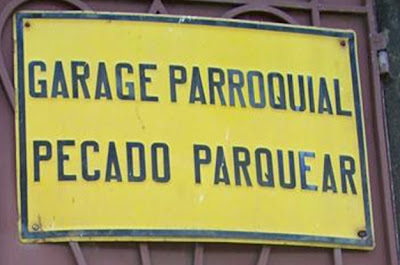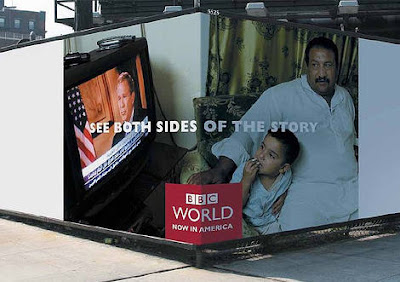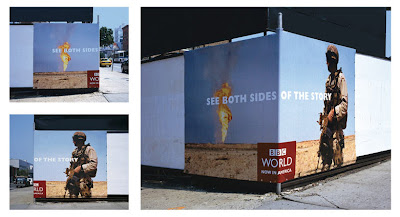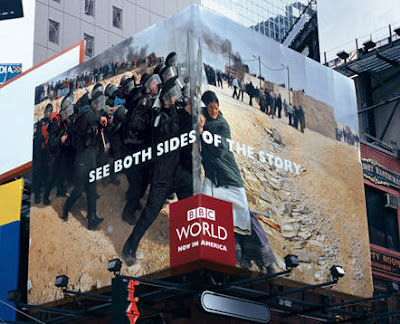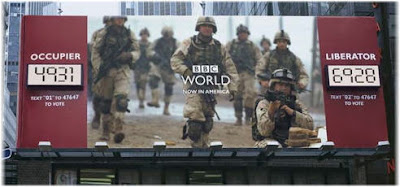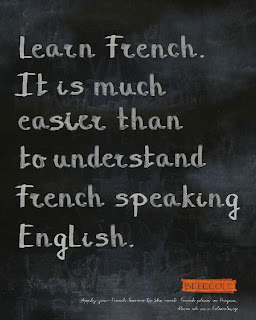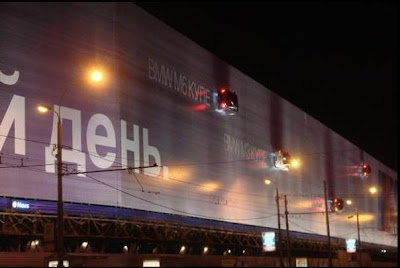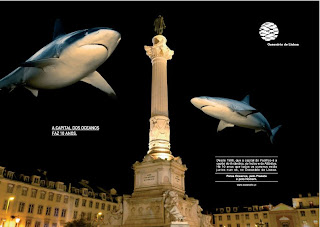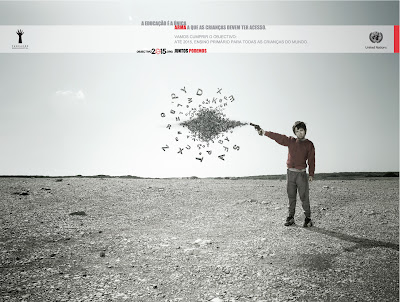Today I came across a relatively new study from the European Union about "Creativity in Higher Education".
The project was initiated by the European University Association and was designed to explore and enhance the understanding of the concept of creativity, to identify best practices and produce recommendations on the issue. To that end, the association invited 32 higher education institutions from 21 countries to cooperate during 2006 and 2007 that examined a range of conditions that might promote or hinder creativity in four themes -creative partnerships, creative learners, creative cities-regions, and creative higher education institutions.
Reading the whole study is interesting (or should be) for any educator but also for anyone in business looking for ways to improve creativity inside their company.
I will highlight here some of the things that caught my attention but first and foremost I have to say that I was glad to see that finally the academic world -or at least part of it- is giving creativity the place it deserves: in advanced nations creativity should be a number one issue.
Per their own admission, "Progress towards a knowledge-based society and economy will require that European universities, as centers of knowledge creation, and their partners in society and government give creativity their full attention," says the report, and continues: "If Europe should not succeed in strengthening creativity in higher education, the very goal of a European knowledge society would be at stake."
But the two things that I want to share are their definition of creativity and their key recommendations.
When it comes to define creativity, they made a primary distinction between creativity as a mental process and creativity in terms of the outcome of that process. "It is important that these two aspects are understood as being distinct from one another, because creative ideas or actions do not always yield creative results. Conversely, creative outcomes are not necessarily based on creative processes." I find this first division very important as depending on the circumstances, we may be searching for the process or the outcome.
(...) "Yet at the same time these two dimensions of creativity should be dealt with in an integrated manner. In other words, creativity should be viewed not just as a goal in itself, but should be explored in a manner that links the methods and practices employed to reach certain objectives with the results of these actions."
The groups involved in the project also differentiated among the following dimensions:
- Individual creativity as it pertains to individual members of the academic and administrative staff and students.
- Collective creativity that pertains to the creativity of groups and refers to the successful establishment of mutual understanding and productive collaboration.
- Ethical dimension of creativity: for any processes and/or their outcomes to be considered truly creative in the higher education context, their social and ethical consequences need to be taken into account.
- Institutional creativity, which refers to the conditions promoting creative organizations.
It is easy to see how these four instances can be transfered almost without change into the business world and why they should also be considered by any company trying to foster creativity under their roof.
In order to identify manifestations of creativity, the networks attempted to answer the following questions: When do we know that a creative process is taking place? How can we identify a creative outcome? Which practices at higher education institutions create an environment favorable for creative processes?
Trying to tackle these questions, the groups involved realized that the answers were often facilitated by attempting to define the opposite of creativity. Through this approach the project partners identified the following core characteristics for creativity in the higher education context:
- Originality: creativity is not about reproduction, but entails new developments (that may build on established knowledge) and requires a certain disrespect for established ideas and concepts as well as personal courage.
- Appropriateness: not every novelty is creative, but creativity manifests itself in new approaches that are appropriate to the problem at hand.
- Future orientation: that is, not looking backwards, but being concerned with what may happen in the future and dealing with the resulting insecurity and uncertainty.
- Problem-solving ability: the capability to identify new solutions to problems; this requires “thinking outside the box”, looking at things from a new angle, venturing off the beaten path and risking failure.
From my point of view, to this list we could add some characteristics that we normally find after the fact, that is when the creative idea is already out there. Characteristics like simplicity or obviousness, what I call the "duh!" reaction. Most of the time, when we really reach the most creative solution we find ourselves thinking how come we didn't think about it before.
Now, to their conclusions (bold is mine).
Their 10 key recommendations, as per their executive summary, are:
For the Higher Education Institutions (HEI)
1. Striving towards a creative mix of individual talents and experiences among students and staff, providing common fora for researchers from different disciplines and offering diverse learning experiences will likely result in conditions favorable to the creativity of the higher education community. Structured exchanges between the arts and other disciplines can be particularly fruitful.
2. Diversity within institutions should be complemented with engagement, outreach activities and cooperation on the local level and beyond. Relations with external partners expose the academy to expertise not found within its walls and prevent isolation and self-reference. Cooperation between HEIs and external partners should follow the model of virtuous knowledge creation by aiming towards co-creation of knowledge through a two-way communication process to the mutual benefit of both partners.
3. Any activity of HEIs has to stand the test of whether it fosters the public mission of the institution in terms of teaching and learning, research or service to society. If it does not fulfil these basic ethical requirements, the activity should not be undertaken. Any profits generated by HEIs should be geared towards socially inclusive wealth creation.
4. Universities should look towards the future in all their activities, rather than being grounded in the past. The high level of expertise of the university community in diverse fields uniquely qualifies HEIs to strive towards “being one step ahead” of the times by going beyond established knowledge, questioning time-honoured ideas and trying not only to solve current problems but also be proactive in identifying issues of future relevance. In keeping with this forward-looking orientation, HEIs should work towards developing internal quality processes that support the creativity agenda by being geared towards the future and avoid over-bureaucratisation.
5. It is recommended that HEIs explore the concept of a learning organisation for their management and governance structures. As important as these structural elements are, they must be complemented with ethical and cultural concerns in order to create an institutional milieu favourable to creativity.
6. Students and staff need to be provided with institutional structures and cultures that aim at
balancing stability with flexibility. The human potential of the university should be provided with the safeguards necessary to encourage risk-taking. At the same time, students and staff should be prepared to contribute towards shaping future developments and be ready to address the insecurity and uncertainty this entails.
7. The institutional leadership should embrace its overall responsibility and balance top-downmanagement with delegating specific decisions to staff and students, as appropriate, in order to ensure a wide ownership of change processes within the university community.
For Governments
8. Legal frameworks, funding mechanisms and policy priorities on the local/regional, national and
European levels may exert considerable influence on creativity within the higher education sector. Governments need to be aware of their role in advancing the creativity agenda and the responsibilities this entails. Higher education institutions must be provided with the financial and academic autonomy necessary for acting on the recommendations outlined in this report. Governments should provide the necessary frameworks and support to enable HEIs to base their activities on their values and missions. Specifically, governments should refrain from pressuring institutions to generate profits at any price. In parallel, governments should assess the degree to which the legal frameworks encourage entrepreneurship in the private sector and encourage banking and other financial institutions to support the creativity agenda of higher education.
For quality assurance agencies
9. Quality assurance agencies should be aware of the potentially detrimental effects of external quality mechanisms if they stress conformity over risk-taking, are oriented towards the past rather than the future and develop into burdensome bureaucracies. QA agencies are invited to explore jointly with higher education institutions how external quality mechanisms may strengthen creativity. The ultimate objective would be the development of quality systems which foster the creativity agenda. This means placing enhancement and an institution’s capacity to change at the heart of the evaluation process.
For external partners
10. Higher education and other sectors of society have long existed in separate spheres. Consequently, there is a mutual lack of knowledge. Awareness on both sides of this shortcoming is the first step towards appropriately addressing this constraint and overcoming it. External partners are invited to cooperate with higher education institutions on matters of common interest, leading to mutual benefits and in keeping with academic values and missions.
Now, while these suggestions seem useful for the US educational environment too, the fact that a good share of HEI have become more "a business" than anything else plus the current political environment in this country may hinder the implementation of some of these recommendations.
Last but not least, if you wonder why at the beginning of this posting I said that "in advanced nations creativity should be a number one issue", the reason is simple. From my point of view less advanced nations do have less problems to foster creativity. Their number one issue is the lack of means but this same lack of means tends to increase creativity among teachers and students. It still holds true that "necessity is the mother of invention".
The whole study (in PDF format) can be found at the EUA's website.
Read More...
 I love the "Z". Is one of my favorites letters and I can give one thousand 'intellectual' explanations of why I like it: because it means "the end" at least in the alphabet; because it represents sleeping soundly when repeated; or because of it's perfect symmetry and shape.
I love the "Z". Is one of my favorites letters and I can give one thousand 'intellectual' explanations of why I like it: because it means "the end" at least in the alphabet; because it represents sleeping soundly when repeated; or because of it's perfect symmetry and shape.



